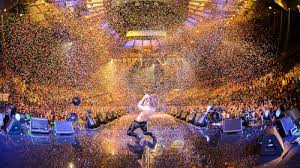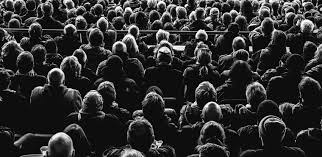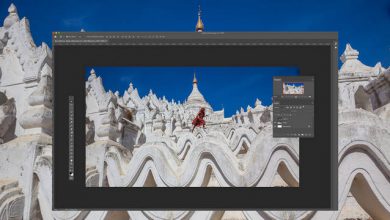The Power of Light Part 1

Tony Corbell: The Power of Light Part 1 Free Download
Well, good morning, everybody. How we doing? Good good. This is fun for me this is uh you know, uh I’ve been very fortunate to get the lecture a lot teach a lot night before last I was in dallas teaching a group of high school photo instructors and so just a shout out to them they’re all gonna be watching that I think so it’s great to be able to do this and share this information I think as we as you follow through on your craft on them or in the more you do this, the more knowledge you gain in the more you realize somebody gave me that somebody helped me along the way and that’s kind of why I do this um it somebody did it for me, you know? So that’s why I keep doing it so along the way please stop and raise your hand. My mentor when I started said that when you’re lecturing to a group of people when you when you’re in the audience at the workshop like this for someone election too you have the you have to make you have to make a choice when someone has a question on the mind and that is do you raise your hand look a little stupid, become a little intelligent are you keep your hand down look a little intelligent, remain a little stupid so the choice is up to you I recommend that you go ahead and ask the question because we’re here and that’s what we’re here for so I hope that that hope today well we’ll help get you guys closer to taking the type of pictures that you want to take um we’re gonna have a fun day I think uh the sun gods were helpful for us today I found I found quotes a lot and I’m a guy that loves quotes on here’s a quote that I found from ansel that says the best pictures have to do with finding the right place to put your camera it’s true I mean this is this looks like it’s in the parking lot there at the entrance into a tunnel view and yosemite which is such a magical place for those who have been there you know what I mean but I do think that part of this is you know is the photojournalists all will tell you you know what’s exposure f ate and be there and b there is the biggest part of it you’ve got to be there you can’t not be in the moment you can’t not have your camera and you can’t not get up before the sun rises to get there you know we don’t shoot at noon that’s why we invented lunch you know that’s when the light is the worst so we try not to shoot at that time of day learning to visualize and learning to think like our camera sees and to think the way a print works is our biggest challenge now this is this is ah, a picture that I found a painting from norman rockwell and I found this years ago uh, this is it. This is a chef wilton’s barbershop in stockbridge, massachusetts. So for those who join us from mass, you probably know stockbridge you’ve probably been to this place, but this is one of his paintings, and what I loved about this is if you look at this painting closely, what you’ll find is that there is no true exposure there. No place in this picture is the correct exposure. Does this correct exposure exist? It’s at night in the background in the back room, over exposed or a bunch of old guys sit around playing music, which I love by the way, in the foreground, the lights are off in the barber shop and it’s dark, and it should be dark. So I think so many times we look at a scene like this and we automatically try to fix it. How do we how do we best represent that picture to a client, right? So we find ourselves often trying to fix something that doesn’t need to be fixed it’s like what’s exposure what’s a true exposure of a black car what’s in the black car look like, well, it’s black that’s its job, you know? And if you take a meter reading a spot meter reading of the black car, you’re not going to get a true black and it’s the same with the white car what’s the true exposure, the white car well, it’s, you know, pretty much white, so we just need to make sure that we understand visually how we’re going to represent the scene that’s in front of us. Is it true atonality? Or is it something other than that ford rump dramatic sake? Or for the purpose of its intended use? It might be something that an art director our client has requested specifically, we just have to be able to perform on demand if you will that’s my that’s, one of things that I feel that I’ve always been paid to do, I’ve always been paid to perform on demand I have to do what they client asked me to do, period, and part of that is looking at the scene and going how do I represent the scene? So I always come up with these these common denominators, and recently I’ve been thinking about how everything in our craft has a duality there’s two of everything, and so what I mean by that is, for example, there’s like quality and quantity see, I didn’t photograph the beatles okay christmas tree ornaments but you know but who’s counting think about think about the difference between like quality and quantity on a bright, sunny day with really crummy alight, you can have great exposure, you’re gonna really allows the light and people will look at a high contrast seen in the woods and say, man, this this is really, really bad exposure well, it’s not bad exposure, it’s bad light we have to know the difference and we have to understand the tools of control for both of those things, but the quantity of light versus the quality of light makes sense. So that’s, what we’re going to spend some time talking about today on dh will identify and go into detail on those we also have soft lightly of hard light when what’s appropriate? Well, I don’t know what is the job you know, in seattle, we happen to be standing usually has the world’s greatest soft box hovering over the city, right and it’s wonderful because of this beautiful, soft great light, which is horrible if you’re trying to do a high contrast dramatic light situation, they have to create yourself seen a sunrise in a model a california, you’ve gotta have hard light are the singing falls apart, so we have to know what we’re doing here public needs versus private desires and what I mean by that is what do you want your work to look like? What are you trying to say to your client? What do you want? Your is it something that you’re trying to say or is that something a client is hard you to say? Our directors will often give you an assignment or a client? A mom of a bride will give you an assignment of something you would never do but does that on that day. Are you an artist or you just a capitalist pig? I mean, you know what? What is? What is your what is your thrust for wanting to do this job rent to do great, take the job, do what the client wants. What do you like him? Don’t put my name on that one, you know? But we have to do that sometimes, but but I do think that and I’ll talk about this as we wrap up toward the end of this segment. Um, we have to do work for ourselves, we have to work on personal projects, and I’ll show you one that I’m working on a little bit. This is fun for me, I’m a big, big beetle stand any of you’ve ever met. And it’s fun to have someone from scotland join us I was election glass cal a couple years ago uh locksley color but it’s going I’m glad to be I’m glad to be a part of this whole thing and in liverpool this is that the heart is not hotel this is just a logo for this property and this is a big sign outside it was raining of course because it’s england uh but that logo that had three had three meanings which floored me I love creativity and so this is the open t seven quarter whatever it is that the opening riff for hard day’s night that’s the chord fingering it also is an overhead look at exactly how the beetle stood at every concert ever did paul and george on the left ring on the back and john on the right it also has twenty squares which represent the album cover so it’s very very clever to me and I love clever stuff and I love being around photographers that are clever and there’s a lot of them out there one was here yesterday one will be here tomorrow you know roberto is just amazing I love that guy uh and he did a great great job and I’m so glad they introduced a lot of science and we talked about the the science of photography and some of the foundation of our craft and we’ll talk about that in physics today you’ve also got a sharpened self which is something decisions of decisions, decisions what are you trying to say what’s appropriate for this peace that’s what you have to understand but all of that has to be handled in such a way that you are under control and when I say under control what I mean by that is I have to make sure that especially in today’s world of digital capture and digital printing I’ve got to make sure that I have detail in my pictures all the way throughout and we all know that we have to understand how those history grams look look and work um for me if you if you think about the history and think about that that rectangular box as almost a pipe and anything that’s inside that pipe will print with detail but if that history ram or any part of it is shoved up against one side left or right that means there’s probably information outside of the pipe that will not print with detail that makes sense so so always for me my live by two sentences gap right gap left when I look at history ram I need a gap on the right I need a gap on the left if a true range image matters to me sometimes I can get away with no detail in the shadows some some instances it is appropriate to have no detail the highlight you don’t want to do it on an ink jet printer because you’ve seen the results of that where you have no inkling on the paper, you get that shiny, dull, glossy, flat, yucky look not good, so we gotta make sure that we understand digitals wonderful it’s a different range of kind of capture than film ever was, but it’s wonderful. We just have to understand our limitations and what we have is from white to black period, everything within that is what we get, and it doesn’t really matter the depth of what your camera can capture and this this is something that a lot of people don’t talk about, but your camera can capture an awful lot of detail. You have many, many ranges of exposure that your camera can capture, but how much can you hold on the piece of paper? And if print is what your ultimate goal is, you can’t print the same that your camera can capture and your camera can’t capture the same thatyou’re I can see your eye can see around twenty twenty one stops of light. Your camera can capture from eight to ten to twelve, depending on your camera. Your paper can hold five if your name’s ansel four for most of us, that’s about it. So we’re going to talk about that. We’re gonna make sure that we hit this target. Here’s the usable range of contrast, the usable I call it the usable range you got middle gray. Eighteen percent. Right in the center. Right. You open a plus one. You’ve got yourself light grey. You open a plus one again and you got yourself white with detail. You close from eighteen percent. Great for middle grade. Down minus one. You got dark gray closed down again. You’ve got black with detail. Makes sense. Think about it this way. Can I draw this over here? I guess I probably can do this. And you guys can follow me over here. Think about it like this. This is this would be like the old h an d curve and eighteen percent gray hits right about there, right right there on the curve. People always wonder why is it eighteen percent gray instead of fifty percent grade? Because as roberto explained yesterday, everything is an exponential in our world. If it was if we were straight, if we didn’t have the log rhythmic curve. If it was just a stray geometric, it would be fifty percent grade, but it’s not we live in a world of exponential. Life falls off by the square of the distance. Everything is off the square root, you know square root of to which is one point four. Right. So we’ve got one point four double it two point eight, double five six, dublin f eleven get the idea it’s all exponential. So eighteen percent falls there. If I open a plus one appear on that thirty six percent I double that and open up one more stop appear seventy two percent which is double that size, right is up there. That’s one third of a stop the low white with detailed book billow white without detail. It’s the last stay nable exposure on the print not what your camera can see not what your eye can see but what you can print makes sense. I promise. It’ll get a lot more fun. And I promised and I promise we will take pictures. But if I close down one stop and cut that in half, I got nine percent great dark gray but closed down again. Half of that I’m not a four and a half percent or black with detail makes sense that’s, where eighteen percent comes from. Most photographers have never heard of that have you is new to you, huh? Okay, so I think one of the things hopes let me back up there is one quarter at the bottom I wanted to finish off leonardo da vinci said in order to produce depth and a painting, you must have the true tone ality of your subject and two totality that aren’t true it all one being brighter than the true totality one being darker than the truth totality what he said is we’ve gotta have highlights and shadows in order produced depth, shape form round this texture makes sense so what that means is well in order have highlights and shadows we’ve gotta have our camera are light has to be direction flat light doesn’t work for creating depth, shape form texture dimension doesn’t work da vinci had a lot of great quotes he wrote tons and tons of information and in one of the one of the books that I read about him he quoted as saying that the the light source you know in portrait photography will always look for a forty five degree lighting on our subject. No one really knows why except that the face looks pretty good, you know and gives great great shape to face one of things that divinci was quoted to saying was that the light when the light on your subject is in the proper position the shadow from your subject on the ground the shadow will be as long as your subject is tall forty five degrees he just didn’t say forty five degrees he said the shadow will be as long as your subject is tall pretty clever guy was genius we’re talking fifteen oh too you know he was ahead of his time can we just you know say that uh what what a talent all right so we’re going to do again now let’s talk a little bit about this let’s talk a little bit about the natural world here this is a picture that I took in memphis tennessee this is the inside the studio at sun records where elvis started and johnny cash and all those guys started and this woman worked there and she is their manager for this great little place and as she had her sweater close and we walked in and she was pretty warm there just unbutton her sweater I saw this tattoo and when I got a photograph this woman honky tonk angel and she could not have been nicer but it’s a window light uh shot it was one hundred percent window light no no other lights in the room it’s of one light in the background there’s light in the studio again natural light this isn’t this isn’t a doorway in trinidad a couple of summers ago I did a workshop in trinidad tobago down the caribbean and it just was spectacular like quality in this doorway this’s in santa fe and old on old prison that’s now defunct on again allah did was turn his head back to his left and allowed this one little strip window to be my light source and it brought to me it it first off it’s kind of a creepy picture but it’s a powerful picture to me because of what it sort of represented the one thing I messed up I should’ve taken off his jury he was a model he wasn’t a prisoner the prison’s long since you know out of commission but it but it’s a great old old place to work and shoot and but I just love the like wanted I was able to pull out of that out of that location but again it’s all natural light this is this is a window light shot and you know it sometimes it’s almost like you’ll hear instructors talk about available light uh what some people mean by that is though use any lights available I’ll use a flashlight I use a mini mag flashlight I used car I photographed a porsche in santa fe new mexico a couple of summers ago and I let the bat it was a night shot and we painted the car with flash so it was a painting with light job but then my background was going so dark well I pulled my rental car around and turn on my high beams and exposed for four seconds for the highlight for the headlights just light up the hillside still at it, my background and it worked great, you know? So it doesn’t really matter where you get light. As long as you get light sometimes, you know, certainly you want the proper amount of light and exposure has to be right in the like, quality, like color temperature, all that has to be there as well. But there are times where it is appropriate to use whatever you can get your hands on. You know, this is I put this picture in my show for one reason this is the first digital picture ever took, and on it was unavailable I shot was a cowboy on a movie set, and this was in july of two thousand, and that was the day that I made the switch two hundred percent to digital. I haven’t shot a roll of film since july of two thousand, so I was one of my and my peer group. I was the last one. I was the last holdout, you know, I’m not switching, I’m not switching and that’s always one. Okay, I’ll switch. You know, it worked out really well for me and I just that so ambient light. You find that great directional light where you’ve got that face that wraps around. That like quality tends to wrap around your great detail the shadows I had good detail in the highlights out of this face great sharpness good eye contact like quality was there it was the winning shot for me you know technically through a quick sure on the internet that so d’oh d’oh india would like to know because you were just talking about what is the difference between available light and natural light well I think natural light is anything that occurs that that is men is not man made to me that’s what I think anyway when I work outside I like sunlight I like reflected light bouncing off of buildings I like like that you know the problem with natural light is it’s hard to count on it on dit makes it very difficult to schedule is firstly commercial shoot big shoots with a lot of people models a lot of equipment a lot of stuff it’s hard to schedule shoots in natural and that’s why movie studios prefer to overpower natural light because they have tohave shoot dates they’ve got three hundred people on a set and they can’t not shoot on that day so I think that for me natural light would be any life that’s not man made available like khun b man made but from a natural light is what’s out there right now and and sometimes you have to control
DownloadThe Power of Light Part 1 Free Download Free
https://2speed.net/file/91CA32D2BBE0
https://upfile.info/file/SLV4F8EBFEFB
https://1fichier.com/?y54w7rpuqgkblh766vau
https://drive.google.com/a/vimaru.vn/file/d/137wQMH8y8N0w_OpYCx6Rxs0HONFcZPIR/view?usp=sharing
https://drive.google.com/a/vimaru.vn/file/d/1OnBKawtGFH1V92JLjzxNFHL44O-TNK3F/view?usp=sharing
https://uptobox.com/qvxokw5xf54n




